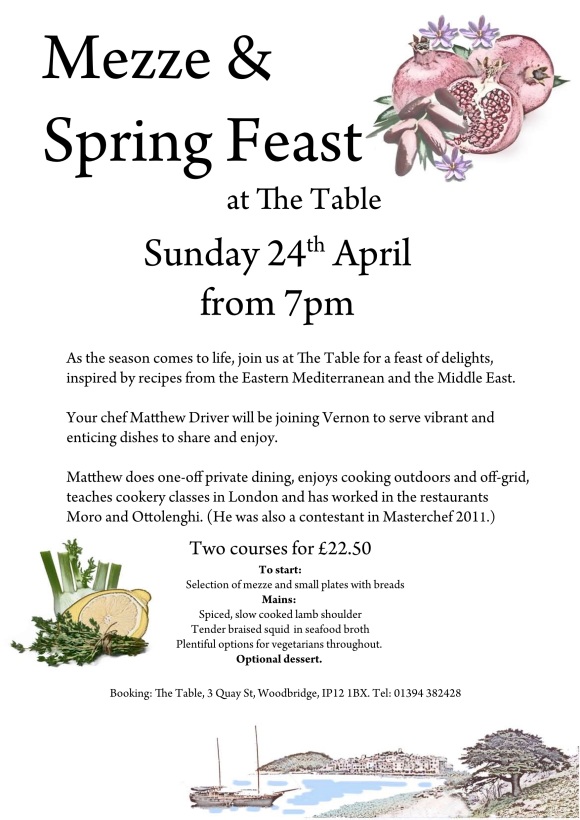I have just been to Noma and eaten at the ‘best restaurant in the world’. Whatever your perceptions of that accolade it sets a certain amount of hype and expectation. This is not a review. That would be meaningless. This is an account of my experience. I want to outline how that experience did or didn’t meet those expectations and the immediate impact it had on me, culinary or otherwise.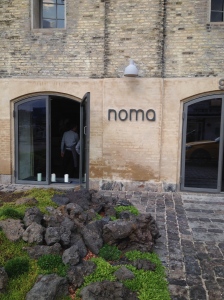
Spoiler alert: given the already unavoidable hype, I preferred to remain as naïve as possible to what Noma would offer before I went. If you’re like me in that respect, and are thinking of visiting, you may prefer to read this after you’ve been.
Aside from the obvious exposure, the Noma experience began some time before visiting the restaurant – particularly for my wife. She had secured this golden ticket for my 40th birthday … after 7 months of trying. This included considerable research to find the best time to try to book (it’s the first Monday of the month), several website crashes, failed booking attempts and Noma reclaiming its number 1 spot in the world ranking just before her final attempt – naturally causing booking attempts to surge. She had all bit given up but decided to have one more go to book a table for four rather than two. In this she was successful and this was where the story began for me.
My 40th birthday present was a trip to Noma in Copenhagen, for lunch on 6th August, with a small caveat. We had to find two more people to come with us. And this was certainly a good thing. Noma have just introduced a sharing table and the idea of sharing any dining experience with others is usually a better idea, and for something as once-in-a-lifetime as this, all the more so. As it turned out, those to join us were the manager of the cookery school I teach at and her husband – these were people I hadn’t socialised with before, which made it all the more special. (It also happened to be her 50th birthday two days before the reservation date.)
So we arrived. What an arrival. Some slightly awkward, photos outside the restaurant, taken by one of the waiters (friendly, professional, no hint of pretentiousness) and we were encouraged to ‘come and eat’. We stepped into the darkened building to be greeted by a line of chefs and waiters and as my eyes adjusted, I realised, as did my companions, that amongst them was the man himself, René Redzepi. We chatted briefly with him about where we had come from and why we were there. I mentioned the birthdays, there was a joke of ‘knocking up a cake’. We shook his hand and we were led to our table, all, I’ll admit, a bit starstruck.
A young German woman was to be our main waitress for the meal. She was cheery, bespectacled and slightly geeky in a good way, and, as for all the staff, completely professional but very relaxed. She introduced the unique meal format: a snappy start with quick sharing plates, followed by some individual ‘main courses’ and finally a couple of deserts. The eating began. I can’t remember how everything appeared, all the components or exactly how it all tasted but I made some notes afterwards and below I attempt descriptions of each plate from the menu in order. (It is all delicious, by the way.)
Sharing plates
Red currant and gooseberry
In a bowl, appearing exactly as described, were a gooseberry on a twig skewer and a string of red currants per person. But subtly and remarkably they had been altered. They were cold, almost part frozen, but still with a fresh crunch, and a light brine seem to have been applied, but the saltiness only seemed to enhance the natural sweetness and freshness.
Kohlrabi and Spanish chervil (‘Nordic coconut’)
A whole kohlrabi is somehow hollowed out, leaves in tact; from a hole emerges a stem of Spanish chervil. We sucked the contents of the kohlrabi coconut out through the chervil straw. A chilled liquid, herby, earthy with hints of chervil and celery enters the mouth. It reminds you a bit of of gazpacho I suppose, both nourishing and refreshing. No one knows if it’s OK to make sucky straw noises in a two-star restaurant, but everyone does anyway.
Moss and cep
Swedish reindeer moss is deep fried and seasoned with cep butter. Four grey-ivory clumps of the moss appear on a ‘bog island’ of inedible live green moss with a twig sticking out. We’re cautioned, with appropriate irony, to not eat the live moss or the twig. It’s crunchy and tastes of Sweden (I would guess).
Flower tart
Vivid flower petals apparently randomly arranged on a slice of seaweed crust, eaten by hand. The crust is light and so crispy in texture but deep and just marine enough in flavour. The petals are fragrant and perfumed but in perfect balance with the crust. This feels like nothing in your hand – in contrast to the effect on your eyes and mouth.
Peas and radishes
I don’t remember this that well but I don’t think that’s a reflection at all on it’s taste. There seemed to be pieces of chopped fresh pea in amongst an impossibly non-sloppy pea purée with slices of radish and tiny lemon thyme flowers. It was sweet and pea-and-radishy.
Pickled and smoked quail egg
One of the theatre pieces. Two fake eggs, bigger than a goose egg but decorated with the distinctive marks of a quail egg, are placed on the table, smoke falling out of the sides. We are instructed to eat it quickly as it is ‘temperature sensitive’ but for some reason everyone else on the table is being slow with the previous course and I don’t want to go ahead alone. I sit frustrated, nodding at the conversation, thinking ‘get a bloody move on’ and watching the smoke subside (I think). Unable to wait any longer I lift the top half of the lid and there is a nest of smouldering hay with two glistening, peeled quail eggs. I announce I’m going for the all in one, pop an egg into my mouth and bite in. I haven’t been foiled by the wait. The yolk is still all delicious, oozing liquid, the white lightly acidic and salty with pickle and hinted with hay smoke.
Flatbread and wild roses
This is simply a crispbread (I can’t recall what it’s made of) layered on top with caramelised rose petals. Aside from the question of how on earth you caramelise rose petals without turning them into cinder, the overriding thing about this dish was the memory it evoked. Something so familiar and distinctive from my childhood but something I couldn’t and still can’t place. I hope I’ll remember.
Cucumber and scallop
This was charred baby cucumber, with parsley flowers, ants and scallop fudge. Those are words I would never have imagined in the same sentence let alone being things I would end up putting into my mouth at the same time. The first of two dishes to use ants, they are citrussy and slightly tropical, lifting the charring of the cucumber. This was also an example of the apparently nonsensical genius which keeps the surprises coming no matter what the hype.
White cabbage and samphire
Circles of cabbage are somehow dried until transparent and take on a sweet flavour. These create a sandwich with samphire in another non-sloppy purée, this time of watercress. Everything tastes the same but different and the textures are unexpected and delightful.
Caramelised milk and monkfish liver
Another temperature sensitive dish but this time I didn’t have to wait. I have no idea how you might even think about caramelising milk but it was somehow made into crisps and topped with monkfish liver in a sort of ice cream shaved on top. It was buttery and irony and fishy and slightly sweet, perhaps the foie-gras of the sea (and without the husbandry issues).
Burnt onion and walnut
This was one of the very few seemingly familiar dishes on the menu (in fact I learned how to do what this looked like at Moro). A whole onion charred on the outside so that the centre was sweet and fragrant. However, as might be expected but confounding expectations, the onion was carefully split down the middle, the centre removed, delicately sliced and each slice coated with a walnut oil dressing and thyme flowers, then placed back into the onion. We had to pull open the whole bulb to reveal the surprise.
At some point around here (or a bit before) a loaf of warm and wonderful sourdough was brought out with what was described as ‘virgin butter’ – cream churned until just before the whey separates. We joked this was ‘overwhipped cream’ but of course it was much better than that.
‘Main courses’
Shrimp and goosefoot, radish and yeast
Described by our waitress as a bit like a shrimp and goosefoot ravioli, this was circles of tender goosefoot leaves sealed with a shrimp filling in a broth of burnt yeast and seaweed. I have absolutely no concept of how all these flavours were created in this dish but that’s just what it tasted like. The ‘ravioli’ fresh, salty and sweet and the broth deep and comforting.
Sour cherries, turbot roe and seaweed
This was slices of dark sour cherry with ‘tuiles’ of somehow dried turbot roe, placed on top. I think the waiter poured a seaweed broth around this. It was sweet, fruity, fishy and salty.
Beef tartar and ants
A flat board with a laid out strip of tartar, sprinkled with ants. The second appearance of ants and adding quite a different dimension here. Seasoning the beef and enhancing its meatiness, apparently without further addition of salt. The only truly meat dish and very welcome.
Salad root
I don’t know what a salad root is but from further research it seems to be just a lettuce root. Perhaps? Anyway, it was first nutty, almost peanutty, then slightly bitter. It came with a salad of foraged leaves including, I think, goosefoots and common orache, and, I think it was this dish, the earliest of peeled wet walnuts. Loads of deep and bitter flavours, I loved this and its disarming simplicity.
Cured egg yolk, potato and elderflower
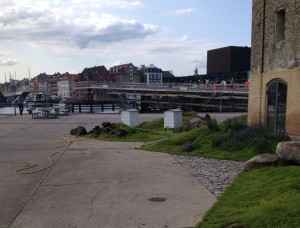
Noma beehives
A just firm but still translucent egg yolk was served surrounded by a ring of finely sliced new potatoes and then an elderflower oil dressing that included beeswax and honey (from Noma’s own bees). This had an incredible flavour of the countryside and fields. It also won the prize, I think any prize, for the most unimaginable technique. Apparently the cure for the egg was produced from the juices that had run off beef that had been hanging and fermenting for three months. How could anyone think that up?
Turbot and nasturtium, cream and wood sorrel
The fish course I suppose. A fillet and perfectly arranged fin meat of a good size piece of turbot, served with a nasturtium dressing, horse radish cream and a big and pretty pile of wood sorrel. This was truly the most amazingly cooked piece of fish I have ever tasted. Soft, firm and tender all at once. Also, however, this was the only dish where I thought there might be a problem. There seemed to be too much wood sorrel. It then occurred to me that given the acidic and prolific nature of this leaf perhaps it was a nod to the traditional lemon wedge of the fish course, it was up to the guest to eat as much or as little as they liked. As it was I ended up eating and enjoying it all anyway.
We then retired briefly outside to digest and take in some early August Copenhagen harbour-side sunshine.
Desserts
Rhubarb, creme fraiche and sorrel
A beautiful and intricate rose of rhubarb was placed onto a tuile of creme fraiche and a sorrel broth. Virtually no, if any, sugar was added and the rhubarb was the sweetest thing on the plate. The flavours of everything were so pronounced because of this.
Raspberries, double cream and rye
The only apparent process in this was the cream. I’m not sure where the rye came in but I believe it was some kind of fermentation process, but there was also liquorice. I don’t think we might have known this, it may have been a mystery flavour, but one of our party had said early on, in passing, that she didn’t like liquorice. This had obviously been relayed to the kitchen and they had brought out a cream without liquorice just for them! They tried the liquorice version anyway and agreed it was better with.
We then retired to a lounge area for coffees and ‘sweet treats’.
The coffee itself was quite interesting. Very mellow and no bitterness, served from a glass vase, a bit like a Chemex, but the brew wasn’t as clear as a Chemex. Perfect drinking temperature and no option for milk or sugar.
The first treat was a plate of ‘caramel yeast’. Apparently this was caramelised rye sourdough. It came with a pot containing a kind of Icelandic fresh cheese on top of a sea buckthorn marmalade. It was very delicious but next was a bigger treat.

Birthday cake
René Redezepi seemed to have take on my challenge (I’d like to think). The kitchen had made us a a birthday cake – and what a cake. A kind of rich yoghurt cream in a perfect cylinder coated with a dark, deep chocolate ganache. This felt so thoughtful and like such a special treat. And we got to cut it with an amazing reindeer horn handled knife.
Next was a cinnamon and liquorice Danish. This was quite likely the best Danish of my whole trip to Copenhagen but I was still quite overwhelmed by the cake.
Finally we were bought a tin containing a huge shard of puffed pig skin coated in chocolate and lingonberries, which we had to break and share. We gave a little cheer to the pig skin, which our waitress seemed to find amusing. An appropriately surprising and unusual way to end the meal of a lifetime.
It was full of surprises, entertainment and excitement and a wonderful way to share an experience.
Thank you Noma, thank you Sofia and Ollie, and thank you most Diana.

Pig skin with chocolate







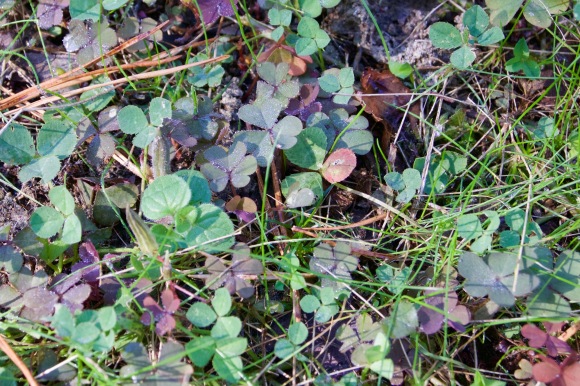

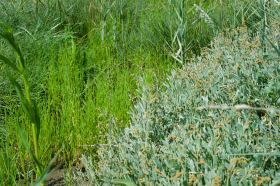
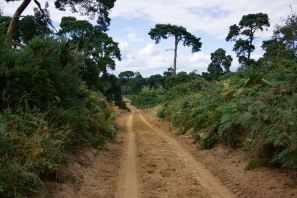



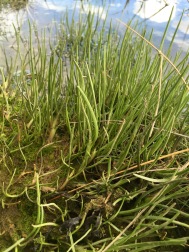 sea vegetable, arrow grass, to dress the charred asparagus and labneh. A fascinating plant: looking like a grass but with tender lower stems that taste of sweet coriander and the upper stems being salty and slightly bitter. I want to make more use of that.
sea vegetable, arrow grass, to dress the charred asparagus and labneh. A fascinating plant: looking like a grass but with tender lower stems that taste of sweet coriander and the upper stems being salty and slightly bitter. I want to make more use of that.
